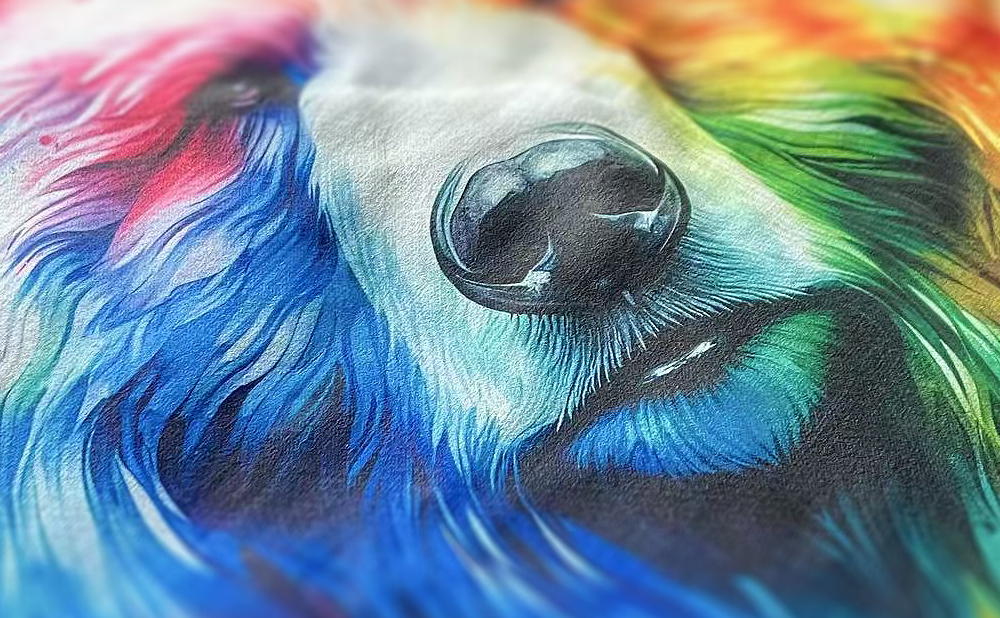What things will affect the quality of DTF transfer patterns?

Friends who work with DTF transfer have probably encountered this problem: clearly following the steps, but the final printed pattern either has incorrect colors, peels off easily, or has blurry details. In fact, this is not a problem with a single link. From the core components of the printer to the final heat-pressing operation, every step can affect the final result. Today, let’s break down these key factors. Whether you’re new to DTF or have some experience, understanding these will help you avoid many detours.
1. Print Head: The “Precision Cornerstone” of DTF Printing
Whether a printer can produce clear patterns depends entirely on the condition of the print head—it’s like the tip of a brush, directly determining how and how accurately the ink is ejected. Inside the print head, there are many tiny nozzles. Ink in four CMYK colors is dropped onto the transfer film through these nozzles, mixing to create a variety of colors.
Take the commonly used Epson i3200 print head as an example; the number and arrangement of its nozzles have a significant impact on printing results. Generally speaking, the more nozzles there are, the higher the ink ejection efficiency, the faster the printing speed, and the more delicate the pattern details. For instance, small fonts and thin lines can be clearly reproduced. However, the print head is not a “perpetual motion machine” and is prone to problems after long-term use: ink is more or less corrosive, and the interior of the print head is made of plastic and rubber materials. Over time, residual ink and dust can clog the nozzles, leading to ink breakage and color loss during printing. The resulting blank streaks on the pattern greatly affect its appearance.
Typically, a print head can last 6 to 12 months, and regular checks are essential—simply print a test strip using software. If the lines on the test strip are continuous, complete, and have no color deviation, the nozzles are in good condition; if the lines are intermittent, don’t hesitate to replace the print head immediately, otherwise, more problems will arise with continued use.

2. Software Settings and Printing Curves: The Key to Accurate Colors
Many people easily overlook software settings, but in fact, they are the “brain” that controls colors. Before printing, two key aspects need to be adjusted correctly: basic parameters and printing curves.
Among the basic parameters, the correct unit of measurement (centimeters, millimeters, or inches) must be selected based on actual needs; otherwise, the pattern size will be incorrect. Additionally, the ink droplet size should be chosen according to the content to be printed—for fine patterns, such as those with small text or complex lines, small ink droplets are ideal, as they produce clearer outlines and higher resolution. For large-area color blocks, such as large-format signs, large ink droplets are more efficient and save a lot of time.
More importantly, there’s the printing curve, also known as the ICC profile. The color patterns we see are actually a mixture of four CMYK inks in specific proportions, and different printing curves correspond to different mixing ratios. Some printer brands thoughtfully pre-calibrate printing curves for their own DTF inks, which can be directly used in the software without the need to manually import ICC profiles—even beginners can handle this easily. However, if using third-party RIP software, you have to import the ICC profile yourself. The process is cumbersome and error-prone, and it’s easy to get color deviations if you’re not careful.
3. Original Image: The “Starting Line” for Clear Patterns
People often ask, “Why is the printed pattern blurry?” First, check the original image you’re using—if the image itself is compressed or has low resolution, even the most advanced printer can’t fix it. It’s like making a copy of a blurry photo; the result will still be blurry, and software can’t “create details out of nothing.”
When selecting an image, prioritize high-resolution ones. The higher the pixel count, the clearer the printed pattern and the richer the details. The format also matters—PNG is the first choice because it has no white background. When printed on dark fabrics, it won’t have an extra white base, looking more natural. However, JPG format is not suitable; using it for DTF printing often results in an unwanted white background, which is very obtrusive and ruins the pattern.
4. DTF Ink: Don’t Underestimate This “Colored Liquid”
DTF ink isn’t something you can choose casually. It directly affects color reproduction and is also related to the lifespan of the print head. There are three key points to note.
First is “compatibility.” DTF ink is specifically designed for transfer films and is different from UV ink (suitable for direct printing on various materials), so they can’t be mixed. Moreover, printing curves are adjusted based on specific inks. If you use DTF ink matching the printer brand, you can directly use the preset curve, resulting in highly accurate colors. However, if you switch to ink from another brand, the original curve will no longer be applicable, and the printed colors may be too red, too blue, or impossible to adjust correctly.
Second is “shelf life.” Ink also has a “shelf life”—unopened ink can be stored for 6 months, and once opened, it’s best to use it within 3 months. Ink that’s been open for a long time loses its activity, leading to less vibrant printed colors and a higher risk of print head clogging. Even unopened ink that’s stored for more than 6 months shouldn’t be used, as its performance will be significantly reduced.
Third is “no mixing.” DTF inks from different brands or types may have different compositions. Mixing them can easily cause precipitation, directly clogging the nozzles and even damaging the print head in severe cases. This is something you must remember.
5. DTF Transfer Film: Ink Needs a “Stable Home” for Transfer
The transfer film is like a “temporary home” for the ink. Its quality directly determines whether the ink can adhere properly and whether problems will occur during transfer. A good transfer film must meet three requirements: good ink absorption, high-temperature resistance, and no deformation.
For example, some high-quality transfer films are made of polyethylene, thick in texture, and have a matte powder coating on the surface. This coating not only allows the ink to adhere firmly but also keeps the transfer film from deforming during curing. Additionally, transfer films with lower transparency are usually better because they have thicker ink-absorbing coatings, ensuring uniform ink distribution and more stable transfer results.
However, low-quality transfer films are problematic: some have loose coatings, leading to uneven ink absorption—some areas can’t absorb ink at all. The coating powder rubs off easily, and even a light touch with a finger leaves a fingerprint. Others have poor high-temperature resistance and deform or bubble during curing (which usually requires temperatures above 110°C). There have been even more extreme cases: transfer films with a lower melting point than the powder adhesive melted first at 150°C during curing, not only ruining the pattern but also reducing the wash fastness. In some severe instances, the transfer film curled so much during curing that it stuck to the top of the oven and even caught fire, damaging the oven’s heating elements and causing significant losses.
6. Curing Oven and Adhesive Powder: The Key to Pattern Adhesion
Only after the adhesive powder melts and cures can the pattern adhere to the fabric. Therefore, the temperature of the curing oven and the quality of the adhesive powder directly determine whether the pattern will peel off.
The curing oven must reach a sufficient temperature—at least 110°C—and once the temperature is reached, the film can’t be taken out immediately; it needs to be kept warm for at least 3 minutes. If the temperature is insufficient, the adhesive powder won’t melt completely, and the pattern won’t adhere firmly, leading to cracking and peeling after repeated wear and washing. Insufficient heat preservation time is also a problem, as the adhesive powder won’t cure thoroughly, similarly reducing durability. An unqualified curing oven will directly result in DTF transfer failure.
The adhesive powder also needs to be of good quality. Cheap adhesive powder has poor adhesion, and the transferred pattern is prone to bubbling and cracking, failing quickly. It’s recommended to choose high-grade hot-melt adhesive powder, which has strong adhesion and high-temperature resistance. After curing, it adheres tightly to the fabric, significantly improving the pattern’s wash fastness.

7. Heat Press and T-Shirts: Don’t Drop the Ball at the Last Step
After going through the trouble of printing the pattern onto the transfer film, if something goes wrong in the final heat-pressing step, all previous efforts will be in vain. Taking T-shirt transfer as an example, focus on two aspects: heat press parameters and T-shirt pre-treatment.
The heat press must reach a temperature of 160°C, and the pressing time must be sufficient. Insufficient temperature or too short a time will prevent the pattern from being completely transferred from the film to the T-shirt, resulting in incomplete printing and blurry edges. However, excessively high temperatures or too long pressing times can damage the T-shirt fabric and discolor the pattern.
The T-shirt itself also needs proper treatment: although DTF technology doesn’t have strict requirements on the cotton content of T-shirts, a higher cotton content usually results in stronger pattern adhesion. Moreover, before transfer, the T-shirt must be ironed with a heat press to smooth out wrinkles and dry the internal moisture. If the T-shirt is wrinkled or damp, the pattern will be unevenly stressed during transfer, and the ink won’t adhere firmly, eventually peeling off.

